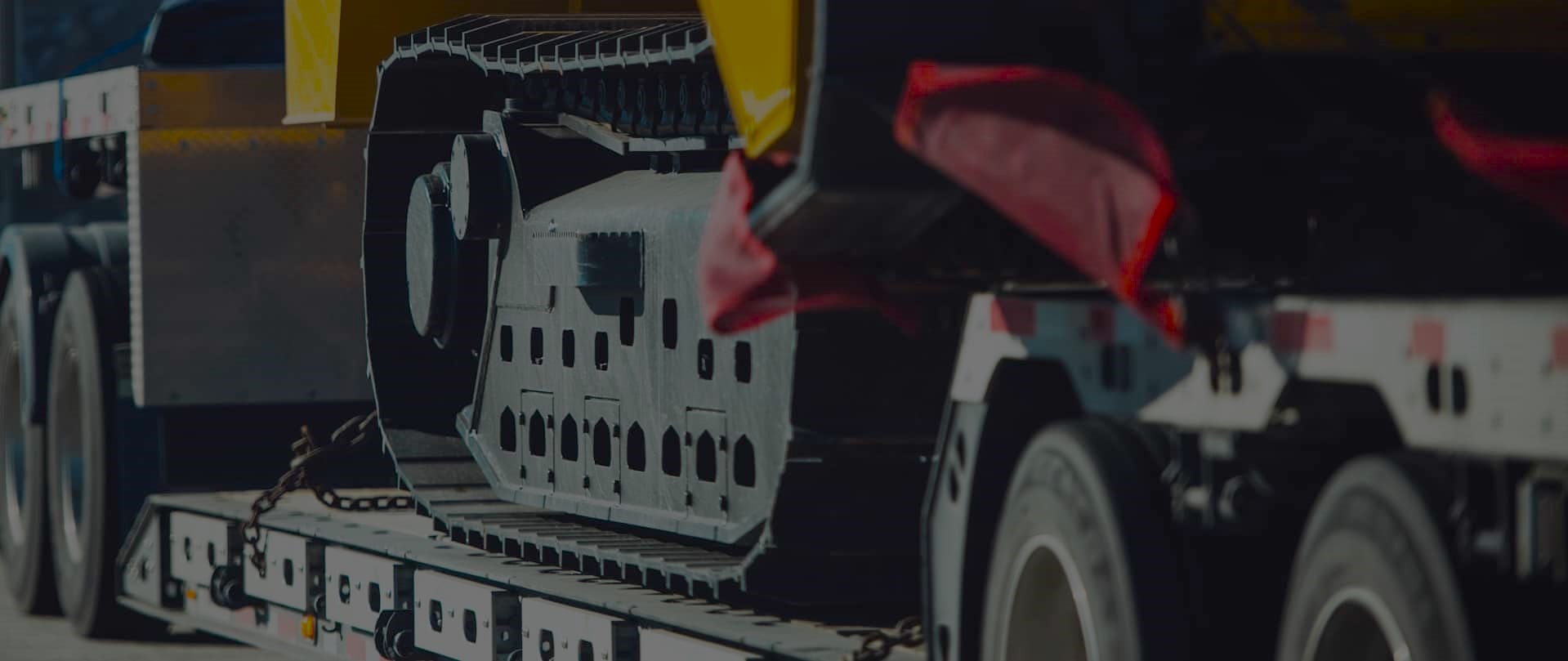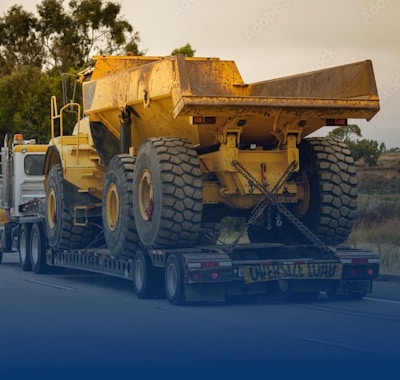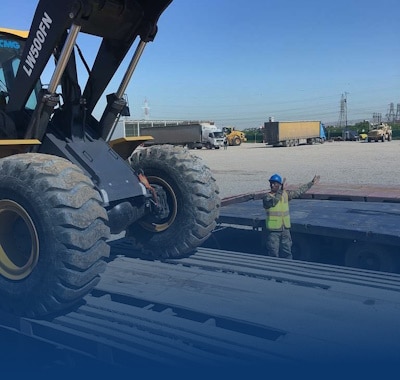Navigating Gulf Coast Storm Season: Oversized Load Delivery Timelines
Freedom Heavy Haul can offer expedited Pickup and Delivery for any size shipment anywhere in the USA. Contact us today for No Hassle, No Pressure Pricing.
This guide sets the stage for how the seasonal risk window shapes project timing. Port closures, flooded corridors, and sudden rate swings can change plans fast. Mid-September brings the sharpest volatility during the hurricane season.
Today you get a practical, step-by-step how-to for planning and routing heavy moves. The focus is on permitting, risk management, and real-time execution so timelines stay realistic.
This guide is written for operations and planning teams that manage heavy haul and high-value cargo along coastal and inland corridors. Expect clear tactics for carrier diversification, permit sequencing, and visibility tools.
Success hinges on planning plus real-time action. Use weather buffers, alternate lanes, and strengthened insurance to protect freight and reduce disruptions. With the right playbook, your teams can keep cargo moving safely when storms threaten.
How to use this guide to plan oversized shipments during storm season
Rely on this playbook to align operations, tools, and people so major transports stay predictable.
Use the guide as a planning framework your team can follow from pre-season preparation through post-event review. Start by matching roles so decision-makers, dispatch, and field staff know escalation steps as conditions change.
Identify the systems you will trust for visibility—TMS, GPS tracking, and automated alerts—and test them before the high-risk window hits. Clear communication rules with carriers help anticipate port closures, flooded roads, capacity limits, and rate swings.
- Translate each section into a concise checklist for forecasting, scheduling, and monitoring shipments.
- Apply the steps to single moves and multi-stop projects so you can scale the approach.
- Bake in preparation milestones like buffer days and pre-booked escorts to add resilience.
| Checklist Item | Responsible | Tool | When to Complete |
|---|---|---|---|
| Pre-season system tests | Operations manager | TMS, GPS | 4–6 weeks before peak |
| Communication protocol sign-off | Dispatch lead | Email, Slack, Phone tree | Pre-season |
| Buffer days & escort bookings | Logistics planner | Carrier portal | At time of booking |
| Mid-period plan review | Cross-functional team | Weekly status meeting | Mid-window |
Keep everyone aligned. A shared understanding between internal staff and carriers lets your team reroute quickly and keep freight moving with fewer surprises.
Understand hurricane timing and geography before you schedule
Anchor planning to the official Atlantic window and map exposure by state before booking moves. The Atlantic period runs June 1–November 30, with peak activity near September 10. Most events cluster from mid‑August through mid‑October.
Official window and peak activity
Plan for the peak. Mid‑September often brings clustered systems that compress capacity and raise risk. That makes ETAs less reliable and can force rapid reroutes.
Top hurricane-prone states to map
NOAA landfall records highlight Florida, Texas, Louisiana, North Carolina, and South Carolina as the most frequently affected states. Mississippi, Alabama, and Georgia also face risk but see fewer hits.
Why mid-September peaks change schedules
Clusters around September 10 can cause rolling delays as carriers reposition equipment and authorities focus on emergency response. Treat each state’s recovery speed as different; some routes and permitting offices reopen faster than others.
- Anchor schedules to the official window and add buffers for mid‑Aug to mid‑Oct.
- Map corridors, ports, and hubs through the high‑risk states before you lock dates.
- Use historical patterns as a baseline but prioritize real‑time monitoring for final decisions.
| Period | Risk Peak | Action |
|---|---|---|
| June–July | Lower | Prep systems, pre-book escorts |
| Mid‑Aug–Mid‑Oct | High (Sept 10) | Add buffers, check alternate lanes |
| Nov | Lower | Review outcomes, update plans |
Oversized load essentials: dimensions, permits, and the right equipment
Start by sizing your cargo to legal thresholds before you pick routes or book trailers.
What qualifies as oversized varies, but federal standards give a clear baseline. Exceeding 8.5 ft (102 in) in width, 13.5 ft in height, 53 ft in length, or 80,000 lb gross requires special handling. Confirm each state rule before finalizing shipment specs.
Trailer and equipment selection
Pick the trailer to match the item: lowboy or double-drop for tall equipment, RGN for self-propelled machinery, extendable trailers for extreme length, and multi-axle systems for concentrated mass. Proper equipment reduces reroutes and extra costs.
Permit basics and processing time
Most state permits process in 1–2 business days. Local permits may take 3–5+ days. Superloads can require weeks and specific escorts per permit terms. Build time into the plan and pre-qualify pilot cars early.
- Align weight distribution with state bridge laws to protect safety and avoid fines.
- Create a permit matrix by state to track lead times, curfews, and restrictions.
- Verify low-clearance structures and construction zones on planned routes to save time.
| Item | Typical processing time | Recommended equipment | Key action |
|---|---|---|---|
| State permit | 1–2 business days | Standard lowboy, RGN | Apply after confirming dimensions |
| Local permit | 3–5+ days | Extendable trailers, multi-axle | Coordinate with local agency |
| Superload | Weeks | Custom multi-axle rigs | Pre-book escorts and route study |
| Escort/pilot cars | Variable | Standard escort vehicles | Pre-qualify and confirm comms |
Map your risks: ports, roads, and capacity during hurricane season
Start by mapping which terminals and inland ramps your network depends on before weather forces reroutes.
Port closures and flooded highways can halt freight movement fast. Expect terminals in the Southeast and Atlantic to suspend operations when systems threaten. Flooded road segments, rail outages, and debris are common causes of long detours.
Plan routes that avoid low-lying corridors. Monitor DOT advisories so you can swap lanes and bridges quickly. Use pre-approved staging on higher ground to protect trucks while teams wait out an event.
Capacity shifts, costs, and FEMA pull-through
As hurricanes approach, drivers reposition or join relief missions. That reduces available capacity and pushes freight rates up. Track nearby markets so you can hold backup equipment and lock contingencies early.
Protecting freight from weather damage
Blend risk planning with simple mitigations: tarping, waterproofing, and securement audits. Temperature-sensitive and high-value freight face elevated damage risk without these steps.
- Pre-plan diversions to inland ramps and secondary terminals.
- Map road segments prone to flooding and debris.
- Hold backup equipment and confirm staging sites on higher ground.
| Risk | Impact | Mitigation | When |
|---|---|---|---|
| Port suspension | Freight delays, reroute needs | Pre-book secondary terminals | Before peak window |
| Flooded roads | Route closures, equipment idle | Alternate routes, DOT checks | Daily during alerts |
| Capacity crunch | Rate spikes, fewer drivers | Reserve carriers, contingency holds | When warnings appear |
| Cargo damage | Product loss, claims | Tarping, waterproofing, audits | At load and during transit |
Gulf Coast storm season and oversized load delivery timelines
Set conservative arrival targets that factor in route closures, port checks, and sudden capacity shifts. Peak hurricane activity near mid‑September often lengthens transit time and raises the risk of delays.
Build realistic ETAs by adding explicit weather buffers and planned blackout windows around any approaching system. Blackouts protect commitments by preventing risky moves during high wind or heavy rain bands.
Building realistic ETAs with weather buffers and blackout windows
Include contingency time for port reopening and post‑event inspections; first-in moves can face multi-day holds. Use milestone-based schedules with clear go/no‑go criteria so teams act fast when forecasts change.
When to advance-apply for permits and escorts to avoid delays
Sequence permit submissions early: state permits typically take 1–2 business days, local approvals 3–5+ days, and superloads may require weeks plus escorts. Reserve pilot cars and specialized trailers as soon as you book equipment to prevent last-minute shortages that add days to a move.
- Hold optioned routes and staging points to swap corridors quickly.
- Use tracking and alerts to watch wind, rain, and surge bands in real time.
- Confirm rate-validity and escalation clauses so cost exposure stays controlled during long delays.
| Item | Typical time | Action |
|---|---|---|
| State permit | 1–2 business days | Apply after dimensions confirmed |
| Local permit | 3–5+ days | Coordinate with local agency |
| Superload permit & escorts | Weeks | Pre-book escorts and route study |
Route planning that works: primary lanes, alternative routes, and re-routing
Plan routes with backup lanes and clear re-route authority so trucks keep moving when access narrows. Use DOT-approved routing tools to confirm bridge heights, axle limits, and narrow-road restrictions before dispatch.
Layer weather intelligence over those routes so you can pivot when forecasts shift. Pre-identify high-probability detours and place fueling and safe-haven staging points on both primary and alternative routes.
Using DOT-approved routing tools and clearance checks
Run state routing software to verify clearances and construction zones. Confirm permits only after the selected route clears height and weight checks.
Avoiding low bridges, construction zones, and time-of-day limits
Map curfews and lane restrictions to avoid needless holds. Time-of-day rules save hours and reduce claims against freight.
Designing inland cross-docks and secondary ports
Build inland cross-docks and secondary terminals into the plan to preserve access when primary terminals suspend operations after severe events.
| Route Element | Tool | When to Check | Key Action |
|---|---|---|---|
| Primary corridor | DOT routing system | Before booking | Validate clearances |
| Alternative routes | GIS + weather feeds | Daily during alerts | Pre-approve detours |
| Cross-dock access | Terminal schedules | At time of staging | Confirm hours & capacity |
| Time restrictions | State permit guides | Before dispatch | Adjust ETAs to curfews |
Operational playbook: communication, tracking, and carrier diversification
Build a clear operational playbook now so teams can act fast when forecasts shift. Lay out points of contact, update cadence, and the channels you will use before conditions change. Make sure roles are named so the operations team knows who authorizes holds, reroutes, or restaging.
Set roles, alerts, and channels for storm-day communication
Define escalation steps in writing. Use a living contact tree that links carriers, escorts, cross-docks, and ports. Run table-top drills so the team practices calls and shortens reaction time.
Real-time visibility with TMS and GPS to anticipate delays
Configure systems—TMS, GPS, and alerting—to surface exceptions quickly. Share dashboards with customers so freight status stays transparent and questions drop.
Diversify carriers and modes to secure capacity during disruptions
Spread business across regional and national carriers. Ask for real-time tracking access, notification speed, and a dedicated storm contact when you vet partners.
Insurance checkup: flood, wind, interruption, and claims readiness
Verify coverage now. Confirm flood, wind, and business interruption policies and document the claims process so you file fast with complete evidence.
“Freedom Heavy Haul’s immediate callbacks and hands-on support proved vital during a fast-moving event.”
| Playbook Element | Who | Key Action |
|---|---|---|
| Communication protocol | Ops lead | Publish contact tree & cadence |
| Tracking & alerts | Dispatch | Enable TMS/GPS dashboards |
| Carrier mix | Logistics manager | Pre-qualify regional + modal partners |
| Insurance review | Risk officer | Confirm coverages & claims steps |
Driver and equipment safety when storms threaten
Keep crews safe by linking pre-trip checks to current forecasts and clear on-road rules. Hot pavement and heavy rain raise the risk of blowouts, overheating, and reduced braking. That combination contributes to a share of large truck fatal crashes, so strict safety steps matter.
Pre-trip inspections: tires, brakes, cooling systems under heat and rain
Inspect tires for tread, pressure, and sidewall damage before each run. Check brakes for pad wear and firm response. Test cooling systems and fluid levels; engines under heat are more likely to overheat.
On-road decision rules: wind thresholds, flooding, and safe staging
Set clear wind and flood cutoffs so drivers know when to pause. Identify higher-ground staging points and vetted yards before dispatch. Require reduced speeds, longer following distances, and avoidance of water-covered roadways as conditions worsen.
- Equip drivers with trusted weather apps and a direct dispatch line for safety calls.
- Refresh securement for equipment: chains, binders, and tarps must be rated and tensioned.
- Perform mid-trip checks during heat waves and post-event inspections before resuming runs.
| Focus | Action | When |
|---|---|---|
| Tires | Pressure, tread, damage | Pre-trip & mid-trip |
| Brakes | Pad depth, response | Pre-trip |
| Cooling | Fluids, belts, temp check | Pre-trip & during heat |
After the storm: restore operations, control costs, and refine plans
Once operations restart, prioritize a structured post-event review of every shipment and cost line. Quick, focused audits help teams see where plans held up and where gaps caused delays or losses.
Compare planned vs. actual times, assess carriers, and document claims
Run a structured review that lists planned vs. actual time for each move. Note missed milestones, late arrivals, and hold times for inspections.
Assess carrier performance for responsiveness, communication speed, and recovery actions. Keep or remove partners based on real-world results.
Document all costs tied to the event—rate spikes, detention, rerouting—and log any cargo damage for claims and root-cause work.
Update routes, permit timelines, and escalation protocols
Revise contingency routes and staging options based on which corridors opened fastest. Adjust permit lead times where approvals lagged.
Fine-tune escalation rules so decisions move faster the next time weather threatens shipments. Archive updated checklists, permit notes, and items needed for a rapid restart.
- Compare planned vs. actual performance by shipment and freight type.
- Score carriers on recovery speed and communications quality.
- Capture every cost line to measure true financial impact on business and logistics.
- Document damage, claims, and revised securement practices to prevent repeats.
| Post-Event Focus | Action | Owner |
|---|---|---|
| Transit performance | Run planned vs. actual report | Operations lead |
| Costs & claims | Log rate changes, detention, damage | Finance & risk |
| Protocols & routes | Update routes, permits, escalation | Logistics planner |
Share lessons learned across teams and partners. Making these updates part of regular practices reduces risk for the next hurricanes and speeds recovery for future freight moves.
Ready to weather the season? Put your plan to work today
Act now, start executing your playbook today so your team has options when forecasts tighten.
Line up carriers, escorts, and staging capacity before peak activity squeezes markets. Confirm roles and system access so everyone can act fast if a hurricane or tropical storm threatens key lanes.
Engage partners with proven experience moving heavy freight and cargo. Ask for real-time tracking, strong insurance, and fast callbacks like those praised at Freedom Heavy Haul.
Request a quote for your next shipment, lock capacity, and set clear contingency triggers. With buffers, alternate ports, and a practiced team, your business can ship with confidence through the season.







